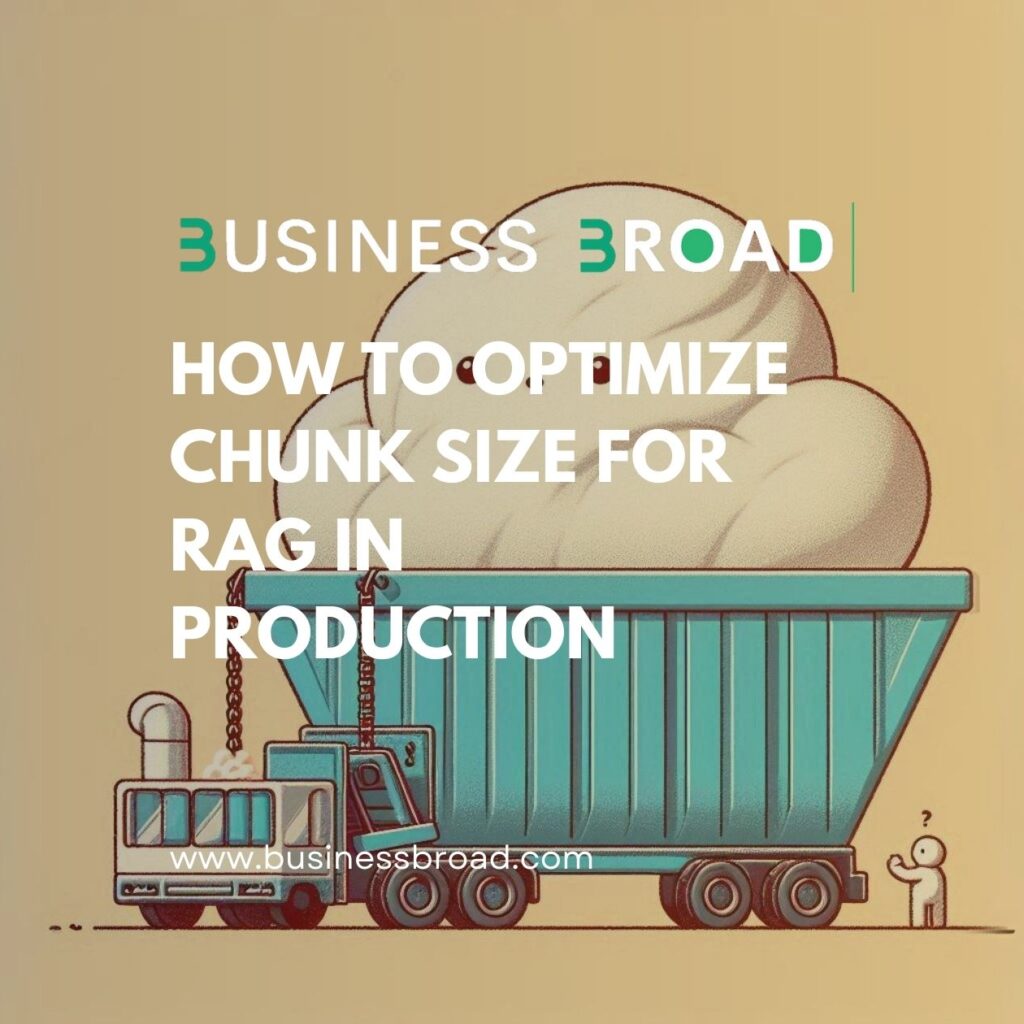In the dynamic landscape of natural language processing, Retrieval Augmented Generation (RAG) models have emerged as powerful tools for context-aware responses. These models combine retrieval-based techniques with large language models (LLMs) to enhance the quality of generated content.
In this article, we delve into the critical aspect of chunk size optimization within RAG pipelines. Whether you’re building chatbots, recommendation systems, or content generators, understanding how to strike the right balance between context preservation and computational efficiency is essential.

Why Chunk Size Matters
Chunking involves breaking down text into manageable segments before feeding it into the RAG pipeline. The goal is to find the sweet spot that maximizes context while minimizing computational overhead. Here’s why chunk size matters:
- Context Preservation: Smaller chunks retain more context, allowing LLMs to generate more accurate and contextually relevant responses. However, excessively small chunks can lead to inefficiencies during retrieval.
- Efficiency: Larger chunks improve retrieval efficiency by reducing the number of chunks to search through. However, they risk losing fine-grained context.
Strategies for Effective Chunking
Let’s explore strategies to optimize chunk size:
- Fixed-Size Chunking:
- Divide the text into equal-sized chunks.
- Experiment with different chunk sizes (e.g., 100 words, 200 words) to find the right balance.
- Monitor retrieval performance and adjust as needed.
- Semantic Chunking:
- Split the text based on meaningful boundaries (e.g., paragraphs, sections).
- Consider headings, bullet points, and natural language breaks.
- Semantic chunks enhance context preservation.
- Hybrid Approach:
- Combine fixed-size and semantic chunking.
- Use fixed-size chunks within semantic boundaries (e.g., split paragraphs into smaller segments).
Understanding RAG Pipelines
RAG pipelines consist of three key steps: Indexing, Retrieval, and Generation. Let’s break down each step:
- Indexing:
- Extract and clean data from various formats (e.g., Word Documents, PDFs, HTML files).
- Split the text into smaller chunks (a process called chunking) to avoid context limitations within Large Language Models (LLMs).
- Convert each chunk into a numeric vector using an embedding model.
- Build an index to store chunks and their embeddings.
- Retrieval:
- Convert user queries into vector representations using the same embedding model.
- Calculate similarity scores between query vectors and vectorized chunks.
- Retrieve the top K chunks with the highest similarity to the query.
- Generation:
- Combine the user query and retrieved chunks into an augmented prompt.
- Feed this prompt to the LLM for generating context-aware answers.
Challenges and Strategies
Now, let’s address some common challenges and strategies for optimizing RAG performance:
- Chunking Strategies:
- Fixed-Size Chunking: Divide the text into equal-sized chunks. Experiment with different chunk sizes to strike the right balance between context and efficiency.
- Semantic Chunking: Split the text based on meaningful boundaries (e.g., paragraphs, sections). This enhances context preservation.
- Hybrid Chunking: Combine fixed-size and semantic chunking for flexibility.
- Metadata and Filtering:
- Embed metadata (e.g., document titles, timestamps) alongside chunks. This improves filtering capabilities during retrieval.
- Consider context enrichment by including relevant metadata.
- Query Routing:
- Use multiple indexes for diverse query types. Route queries intelligently to the appropriate index.
- Optimize retrieval efficiency by dynamically selecting chunks based on the task
As you embark on your RAG journey, remember that chunk size optimization is both an art and a science. It’s about finding that delicate equilibrium where context thrives without compromising efficiency. Whether you’re fine-tuning chatbots, building recommendation engines, or shaping the future of conversational AI, keep experimenting, iterating, and adapting. The right chunk size isn’t a fixed formula—it’s a dynamic dance between precision and pragmatism.
So go forth, optimize those chunks, and let your RAG system shine!





2 Comments
[…] How to Optimize Chunk Size for RAG in Production […]
[…] How to Optimize Chunk Size for RAG in Production […]